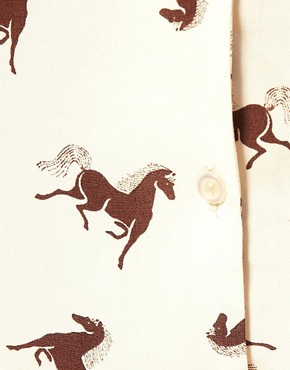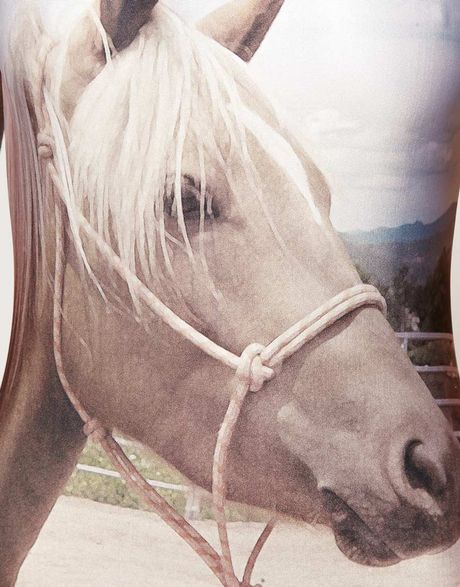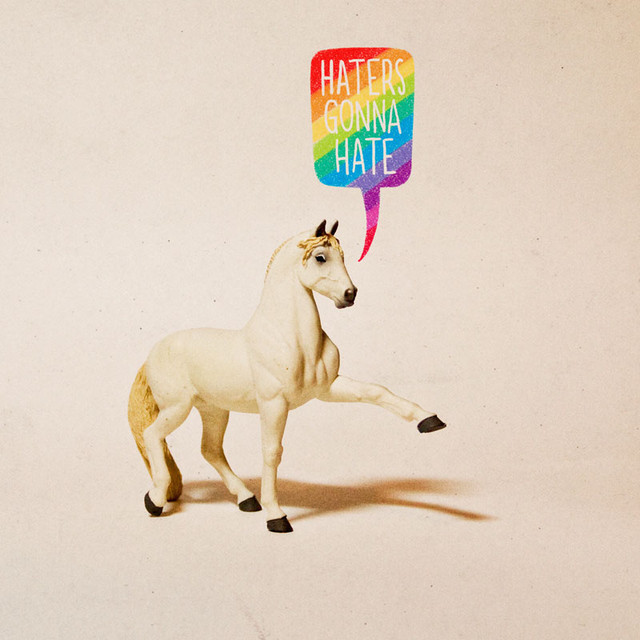Horse Pictures to Print Bigraphy
Source(Gogle.com.pk)Crazy Horse was a legendary warrior and leader of the Lakota Sioux, celebrated for his battle skills as well as his efforts to preserve Native American traditions and way of life. Resisting efforts to force the Sioux on to reservations, he fought alongside Sitting Bull and others in the American-Indian Wars, and was instrumental in the defeat of George Armstrong Custer's forces at the Battle of the Little Bighorn. After surrendering to federal troops in 1877, he was killed amid rumors of a planned escape.
More to Explore
PEOPLE AND GROUPS
Sitting Bull
Black Elk
George Armstrong Custer
THEMES
Manifest Destiny
Westward Expansion
EVENTS
Battle of the Little Bighorn
RELATED TOPICS
American-Indian Wars
Native American Cultures
South Dakota
Recommended Articles
Sitting Bull
Sitting Bull
Sitting Bull was the Lakota Indian chief under whom the Sioux tribes united in their struggle for survival on the North American Great Plains.
Battle of the Little Bighorn
Battle of the Little Bighorn
In 1876, George Armstrong Custer and more than 200 members of the U.S. 7th Cavalry were killed during "Custer's Last Stand."
American-Indian Wars
American-Indian Wars
Conflicts between Native Americans and American forces reached a critical juncture in the 18th and 19th centuries.
Native American Cultures
Native American Cultures
Long before Columbus, another group of people discovered America: the nomadic ancestors of modern Native Americans.
Did You Know?
The Crazy Horse monument in South Dakota has been under construction since 1948. When it is completed, it will be the world's largest sculpture.
Since his violent and controversial death, Crazy Horse, or Tashunka Witko, has become almost a mythical figure of the Great Plains Indian wars. The place and date of his birth are uncertain, but he was probably born in the early 1840s near Bear Butte on the Belle Fourche River in South Dakota. His father was a medicine man of the Oglala subtribe, his mother a Brulé. There has been much speculation about the origin of the name Crazy Horse, but most historians now agree that his father had the same name. As a youth he was known as Curly, but acquired the father's name after proving himself in combat.
He was below average height, his body lithe, his hair and complexion lighter than that of most Indians. Various photographs bear his name, but most have been discredited, and probably none is genuine. Except for his last days near Fort Robinson, Nebraska, he was out of reach of frontier photographers.
His first encounter with U.S. soldiers was on the old Oregon Trail, July 25, 1865, at Platte Bridge, where he acted as a decoy to draw soldiers out of their defenses. During the following year, when soldiers marched up the Bozeman Trail to build forts, Crazy Horse honed his skills as a guerrilla fighter and studied the ways of his military adversaries.
In December 1866, when the Sioux and Cheyenne combined to challenge Fort Phil Kearny, Crazy Horse's daring as a leader of the decoy warriors brought Lt. Col. William J. Fetterman and eighty men into an ambush that became known as the Fetterman massacre.
During the following decade, Crazy Horse joined Sitting Bull in an unyielding determination to defend the Black Hills and resist reservation control. When the U.S. Army mounted a three-pronged military operation in 1876 to drive the "free" Plains Indians onto reservations, Crazy Horse confronted the column led by Gen. George Crook at Rosebud Creek, June 17. He concentrated his warriors against weak spots in Crook's lines, fighting hand to hand at times to win the day.
After the battle, the victors rode over to the Little Bighorn to join Sitting Bull's large encampment of Sioux and Cheyenne. On the twenty-fifth, Gen. George A. Custer's column attacked the camp, and Crazy Horse and Gall, a chief of the Hunkpapa Sioux, led their warriors in a pincers attack that quickly enveloped Custer's divided cavalry and wiped it out.
Other military forces pursued the Indians, eventually driving Sitting Bull into Canada. Crazy Horse and his followers attempted to hold out in remote areas of the Yellowstone country, but soldiers hunted them relentlessly. On May 6, 1877, he gave himself up and spent the summer near Fort Robinson, awaiting the assignment to a reservation that had been promised him for surrendering.
The events affecting Crazy Horse during that long summer were imbued with elements of classical tragedy. Deceptions, betrayals, and false rumors engulfed him. He was disliked by some of the older Indian leaders, and because of his popularity among the young warriors, rumors spread that he was planning an outbreak. When on September 5 he was arrested, he offered no resistance at first. But when he saw that he was to be locked in a guardhouse, he struggled with his captors and was stabbed to death. From the day of its occurrence this incident has been described in several versions, all adding to the mystique of Crazy Horse.
Robert A. Clark, ed., The Killing of Crazy Horse: Three Eyewitness Views, with commentary by Carroll Friswold (1978); Mari Sandoz, Crazy Horse: The Strange Man of the Oglalas (1942).
DEE BROWNAlfred Munnings was born of old East Anglian farming stock on the 8th October 1878, the second son of John Munnings, Miller of Mendham, Suffolk. He revealed artistic talents at a very early age, even before his school days at Redenhall Grammar School and Framlingham College, and readers of his autobiography will recall the drawings of indians, trappers and scalp-hunters, Knights templars, and "My Mother's pony, Fanny', done at the age of nine.
Leaving Framlingham at the age of fourteen and a half Alfred Munnings was apprenticed to the firm of Page Brothers, lithographers of Norwich as a poster artist from which period date the designs of "lovely girls in large hats" for Caley's Chocolates. Many examples of his posters are to be seen in the Studio at Castle House.
After working from nine in the morning to seven at night he attended the Norwich School of art for a further two hours each evening. During his six years of apprenticeship he came to the attention of John Shaw Tomkins, a director of Caley's Chocolates, who was his earliest patron and who greatly encouraged him and subsequently took him on a visit to the Continent. One of Munnings earliest commissions was of John Shaw Tomkins' father posing on a garden seat with his collie dog, and the picture "Daniel Tomkins and his Dog" has been acquired for the Museum.
In 1898 whilst still an apprentice at Pages, Munnings had his painting, the delightful picture 'Stranded' accepted and hung by the Royal Academy. The original painting is in the Bristol Art gallery and a print can be seen at Castle House. This was to be the first of his 230 pictures hung in the Royal Academy up to 1949.
StrandedAt the end of his apprenticeship he returned to Mendham where he had his first studio, a converted carpenter's shop, and painted "horses, village characters, hunting themes and landscapes". Apart from a period of study and painting at Julin's Atelier in Paris, a number of works from which period are at Castle House, he stayed and worked in Norfolk until 1911 when he went to Cornwall, attracted by the famous Newlyn School. Having established himself with stables and studios at Lamorna, it was there that he became friendly with Harold and Laura Knight, Dame Laura subsequently becoming a regular visitor to Castle House.
It was from Lamorna that he made his excursions to Hampshire where he had discovered, in the gypsy hop pickers, a wealth of painting material. Such notable examples as 'Departure of the Hop Pickers' (National Art Gallery, Melbourne) and 'Gypsy Life' (Aberdeen Art Gallery) did much to establish his name and fortune.
His extraordinary vitality, his joy in his work, none of us could forget him. He was a fighter. He fought the wind that shivered his easel and canvas. He fought the heat and cold. He fought the shifting sun and the changing shadows.
Dame Laura Knight
Munnings lost the sight of his right eye in an accident when he was twenty (a blow from a briar when lifting a dog over a hedge) and, rejected on two occasions by the Army because of his sight, he spent the first three years of the 1914-18 war mainly in Lamorna. In 1917, with the help of a friend, he got a lowly job caring for remounts at Calcot Park near Reading and on his departure from Lamorna, Laura Knight said of him "His extraordinary vitality, his joy in his work, none of us could forget him. He was a fighter. He fought the wind that shivered his easel and canvas. He fought the heat and cold. He fought the shifting sun and the changing shadows". Her remarks underline his amazing achievements in overcoming the handicap of being blind in one eye. Visitors to Castle House will see evidence of the enormous and versatile output which was to continue to the end of his life.
Horse Pictures to Print for Kids Black and White to Color Funny Hd Wallpapepr Images Pics
Horse Pictures to Print for Kids Black and White to Color Funny Hd Wallpapepr Images Pics
Horse Pictures to Print for Kids Black and White to Color Funny Hd Wallpapepr Images Pics

Horse Pictures to Print for Kids Black and White to Color Funny Hd Wallpapepr Images Pics

Horse Pictures to Print for Kids Black and White to Color Funny Hd Wallpapepr Images Pics
Horse Pictures to Print for Kids Black and White to Color Funny Hd Wallpapepr Images Pics
Horse Pictures to Print for Kids Black and White to Color Funny Hd Wallpapepr Images Pics
Horse Pictures to Print for Kids Black and White to Color Funny Hd Wallpapepr Images Pics

Horse Pictures to Print for Kids Black and White to Color Funny Hd Wallpapepr Images Pics
Horse Pictures to Print for Kids Black and White to Color Funny Hd Wallpapepr Images Pics

Horse Pictures to Print for Kids Black and White to Color Funny Hd Wallpapepr Images Pics

Horse Pictures to Print for Kids Black and White to Color Funny Hd Wallpapepr Images Pics

Horse Pictures to Print for Kids Black and White to Color Funny Hd Wallpapepr Images Pics

Horse Pictures to Print for Kids Black and White to Color Funny Hd Wallpapepr Images Pics

Horse Pictures to Print for Kids Black and White to Color Funny Hd Wallpapepr Images Pics

No comments:
Post a Comment